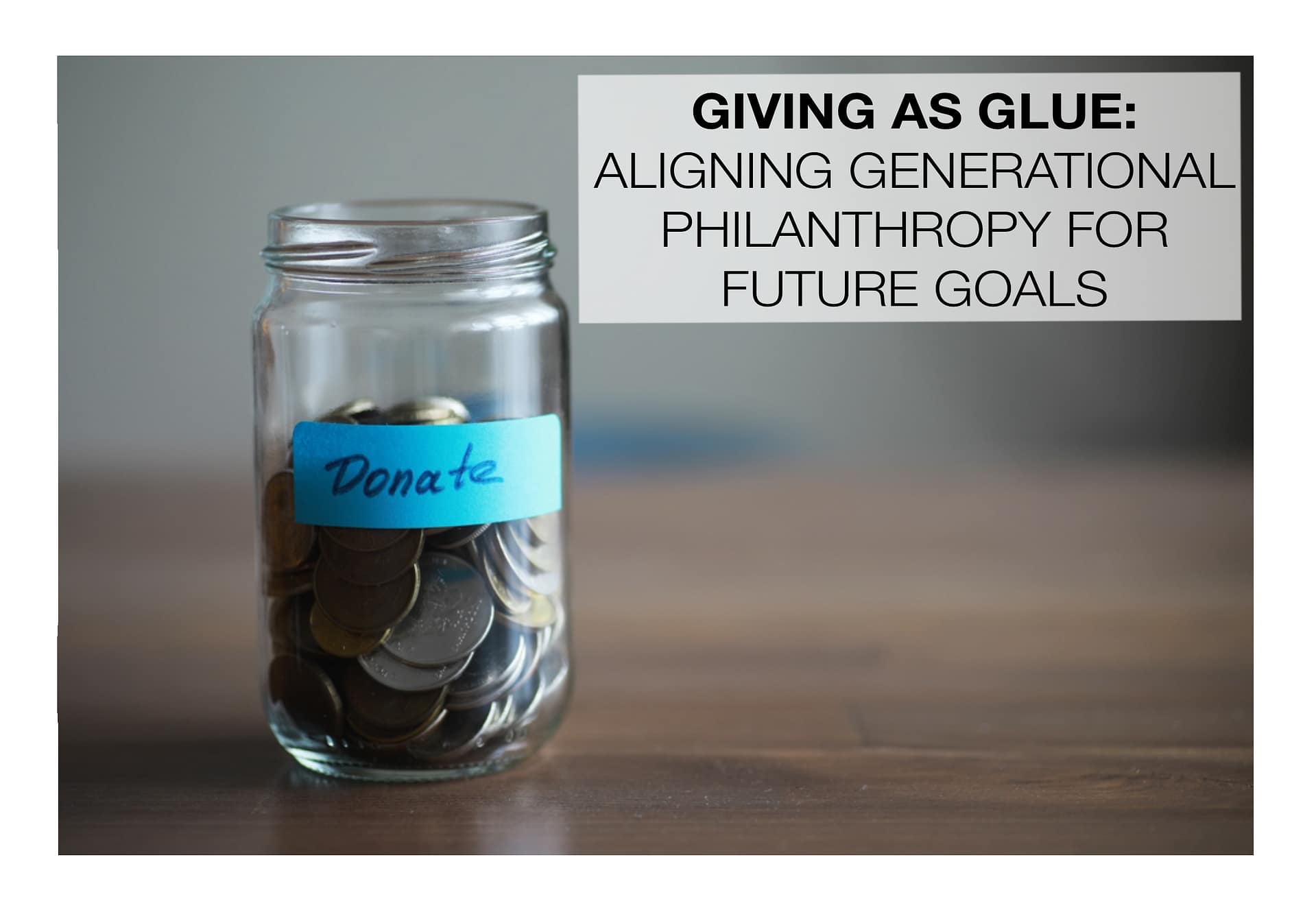People often look at generational planning amongst high-net worth families with a focus on their personal balance sheet, family office or businesses. Yet, one of the family’s greatest impacts can be felt in its community outreach, in the form of philanthropy.
Many family offices have instilled the practice of giving that can endure for years – maybe decades – and if done correctly. These gifts, whether in the form of regular bequests or deeper endowments, can create meaningful impacts in their local communities and their beloved institutions intended to outlast the family itself.
In many cases, they believe that they’ve imbued their children with a unified spirit of giving. But what if the children have a different vision? They may see the family’s future philanthropy going in a different direction or at depths that diverge from what the family has done in the past. How can the two sides align their perspectives?
I was talking with someone recently whose parents could have faced a similar situation. Their children had been taught financial literacy from a young age. As their adult children came into their own, however, they had their own thoughts about philanthropy. Rather than force the kids to give to organisations the family had always supported, the elders had established a foundation for the children. The parents also had given their children decision-making power over their own money management and investments. With the parents’ guidance, their children were steering their giving as their hearts intended.
I view charity as the glue that brings families together. When children are young, parents who take their children to charity events – 5K runs, working with food distributions or at food kitchens, charity BBQs, age-appropriate dinner events, even galas – this is the first insight they get to their parents’ commitment and impact on the community. They also may visit an organisation that the parents support financially, walking the halls, seeing staff or volunteers helping others, in some cases seeing the family’s name on the wall.
The kids see first-hand – and hands-on – how their family’s giving is having an impact on the people and organisations in need.
Such visits are the actualisation of something that should first happen at home. Around the proverbial “kitchen table,” parents discuss with their children the importance of helping those in need. The conversations are then reinforced by witnessing their parents supporting the community through “time” (volunteerism), “talent” (lending specialised skills to organisations) and “treasure” (financial contributions).
To be sure, the children eventually will learn of the tax or financial benefits of charitable giving. And they’ll realise that such benefits are a byproduct, not the focus, of philanthropy.
It’s also around that table where children, as they grow and mature, will learn the nuance of the family’s giving. This could be why they chose a family foundation, instead of a donor advised fund, with the former giving the family more control over their giving and its impact.
As we’ve written before, bringing the family together to have such conversations – about the family mission, investments, and philanthropy – dispenses even more glue to bond the family. They can become closer, adhering to similar missions, or sharing thoughts on how the mission can evolve.
If you have a family of any age and maturation and you’re exploring how to instil a deeper sense of community commitment, let’s talk. We had these conversations years ago with our now-adult children – talks we continue to have today as they plot their own financial planning and philanthropy. More than your name on a room or building, you’ll find the lives you impact – those of your children – will continue to pay it forward in ways you couldn’t have imagined.

Leave A Comment